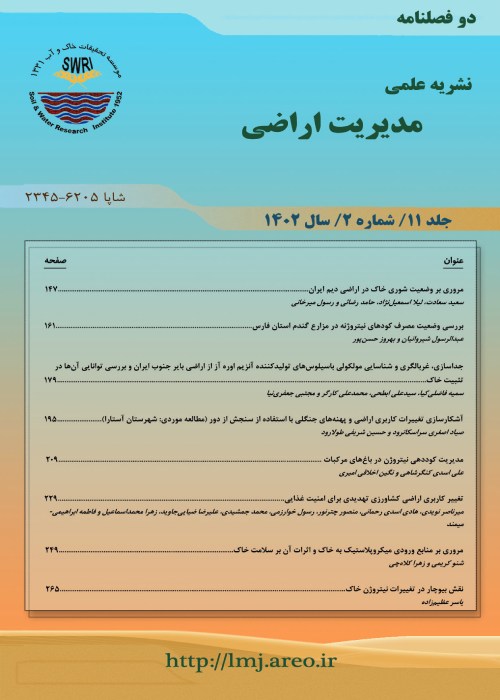Assessment of ET-Based Water Utility Index(A Case Study of the Karkheh River Basin)
Water Utility Index (WUI), first introduced by D. White (1958), is defined as one kg of crop produced per one cubic meter of water evpotranspired. This concept was later replaced with the more inclusive one of ‘water productivity’ (WP). The objective behind this latter concept was to provide a measure for interpreting the results of field experiments of water consumption used in making proper provisions for irrigation management, detecting opportunities for water saving and enhancing water productivity, and developing water allocation decision-making support systems. In order to address the water crisis at the national level, the present article presents a detailed definition of the index and the challenges facing its application to develop realistic water saving measures. It is claimed that evaluations solely based on the WP Index, in which the water applied (or, water withdrawn) is the denominator (WPAW), are to some extent misleading. It is argued that the index does not represent real amounts of water saved or effectively used, especially when it comes to the assessment of the so-called ‘water-saving irrigation systems (e.g., pressurized irrigation). To overcome this inadequacy, it is initially proposed that the ET-based WP (i.e., WPET), rather than the plain WP index, should be used for this purpose. In a second stage of the study, a simple computational methodology is developed that is based on the currently available and cost-effective data on ETc and crop yields across the nation (as reported in the national document on water or in the statistical reports on agriculture). As an illustration, the data available on the Karkheh River Basin and the WPET values measured for the major crops of wheat, barely, alfalfa, potato, silage maize, clover, grain maize, sugar beet, onion, tomato, cucumber, and watermelon grown in the basin are computed to be 1.32, 1.49, 1.22, 5.74, 7.93, 1.73, 1.37, 6.17, 6.61, 8.24, 5.07, 6.94, and 2.05 kg/m3, respectively, which are then used to calculate the average value of 2.05 kg/m3 for the whole basin. Finally, WP values reported in the literature and measured using the conventional filed methods (i.e., WPAW) for the above crops grown both in the study basin and across the state are used to derive a proper regression relation between WPET and WPAW, which exhibits a satisfactory goodness of fit (R2=0.96). Using this relation, the average value of WPAW for the basin is obtained to be about 1.20 kg/m3, which is consistent with the values reported elsewhere. Based on the above observations, application of the proposed method as a low-cost and reasonably accurate one is recommended for the estimation of WPET and, thereby, WPAW.
- حق عضویت دریافتی صرف حمایت از نشریات عضو و نگهداری، تکمیل و توسعه مگیران میشود.
- پرداخت حق اشتراک و دانلود مقالات اجازه بازنشر آن در سایر رسانههای چاپی و دیجیتال را به کاربر نمیدهد.



